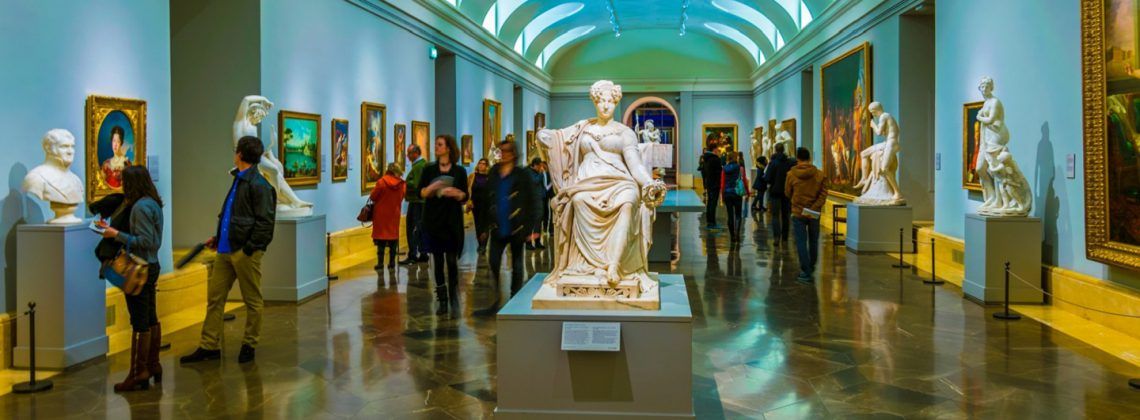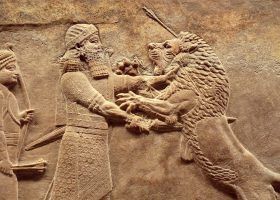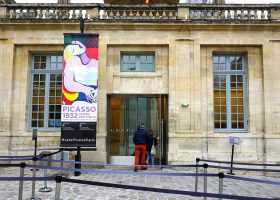Exciting times are ahead. You are about to enjoy one of the most important museums in Europe, and you want to see it all! But if you have limited time at the Prado, how can you decide what to see? This article will guide you like Ariadne’s thread between all the things you must see at the Prado Museum plus local tips that will make you say: “Wow, I’ve read about that!”.
Pro Tip: Planning what to do on your trip to Madrid? Bookmark this post in your browser so you can easily find it when you’re in the city. Check out our Madrid guide for more planning resources, our best Madrid tours for a memorable trip, and how to see Madrid in a day.
Best Artworks To See At The Prado Museum
Telling you that this list has all you need to see at the Prado Museum would not be accurate because the Prado collection is massive. The museum website lists almost 2,000 artworks currently on exhibit and 17,804 additional paintings, drawings, and sculptures in the archives! It is quite a lot to see.
The first thing you must know about the Prado Museum is that it’s more of a museum of artists than a museum of art. It hosts the most comprehensive collections of great masters like Goya, Velázquez, Rubens, El Greco, and Bosch, among others.
Once you have decided what artworks you must see at the Prado Museum, you need to choose the best time for your visit. Check our article for useful information about the Prado Museum including tickets, times, how to get there, and more.
So, plan your visit using our list of what you have to see at the Prado, and you will have a productive couple of hours there discovering many of the fantastic treasures in its rooms.
Not ready to book a tour yet? Find out how to visit the Prado Museum.
11. Nude Old Man In The Sun
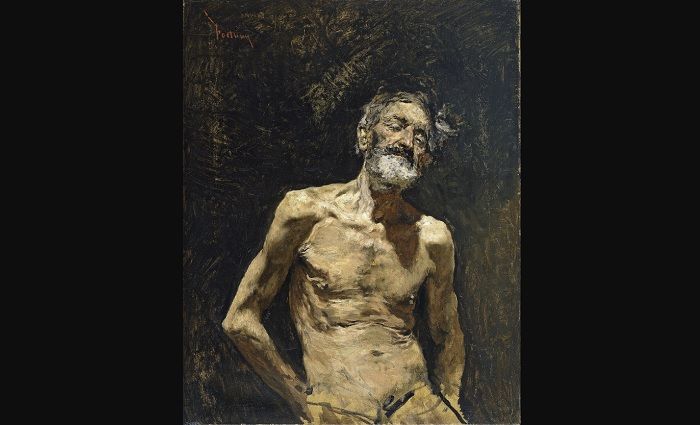
Mariano Fortuny y Marsal | Ca. 1871 | Oil On Canvas | Room 063B
Fortuny had a successful international career but might be known to a smaller public than the other artists on this list. However, he was one of the most relevant Spanish artists of the 19th century. His paintings are vibrant and full of light, with incredibly vivid landscapes, like the fantastic Nude Boy on the Beach at Portici.
The Nude Old Man in the Sun is my favorite. It is an outstanding example of the influence of artists like Ribera, as historian Javier Barón Thaidigsmann highlights in his book Portrait of Spain. But you can also perceive it as very modern.
What makes it even more interesting is that it is an anatomical study and it is unfinished—the lower part is only a sketch. This is very typical of Fortuny’s work, as he used to focus on the central part of his paintings. And did you know that its original canvas was longer? Part of the canvas showing a portion of the legs was lost after framing it!
Pro Tip: Check out the similarity between this painting and Ribera’s Saint Andrew in the same room.
10. The Three Graces
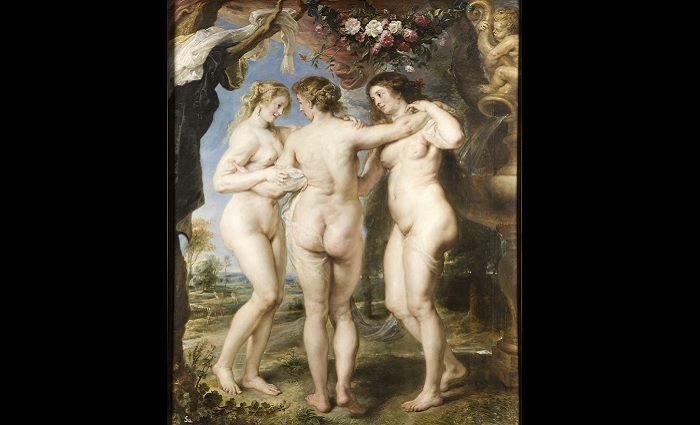
Peter Paul Rubens | 1630 – 1635 | Oil On Oak Panel | Room 029
Rubens is one of the best-represented artists in the Prado collection. And The Three Graces is not only a masterpiece of extreme importance in art history, but it is also among the most intimate.
Alejandro Vergara Sharp, art historian and Rubens expert, says that Rubens must have painted it for himself. This would explain why he still owned it when he died and why we do not have the sketch of the painting—which Rubens always did when he worked on a commission.
Furthermore, the woman in the middle resembles Ruben’s second wife, Helena. This could be the first time Ruben portrayed her just after they married and before she became his favorite model.
9. David With The Head Of Goliath
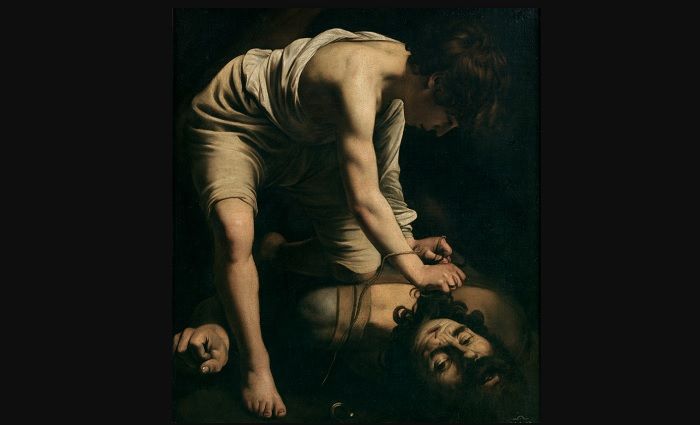
Caravaggio | Between 1596-1600 | Oil On Canvas | Room 006
You don’t even need to be an art expert to enjoy the extraordinary mix of emotions that Caravaggio delivered in every work. It is just a universal language of beauty and intensity. So, please, take the opportunity to see his paintings whenever possible because it is a unique experience.
This portrayal of David is the perfect example of the artist’s brilliance and originality. The 2011 Hermitage exposition catalog explains that the artwork—wrongly attributed to Caravaggio’s students in the 19th century—is from the artist’s youthful years. This explains the composition and technical differences between it and the other two paintings with the same subject created by Caravaggio in 1607 and 1610.
Here, the originality lies in the pose. Instead of representing the victorious David brandishing the head of the giant as a trophy, Caravaggio imagines the young shepherd tying the giant’s tresses to reveal his head. Furthermore, the episode doesn’t appear in the Bible, nor has any precedent in art or iconography!
8. The Annunciation
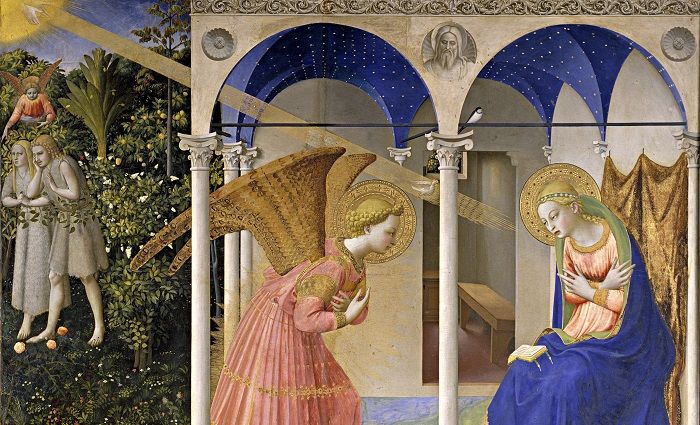
Fra Angelico | Ca. 1426 | Tempera On Panel | Room 056B
At first, you get attracted by the beautiful light and the vivid blue of the painting—the most expensive color back in the 15th century. But getting closer, you may notice there is something “wrong”.
The Virgin Mary and the Archangel Gabriel, who is announcing the birth of Jesus, are way too big for the scene. Of course, this representation is typical in medieval art, where the dimensions indicate the importance of the subject, but then, why is the architecture so realistic?
Miguel Falomir Faus, director of the Prado Museum, says it may be the first time an artist uses Brunelleschi’s perspective theory from the previous year. There is an effort to be realistic, keeping those elements that made the message bold to the Medieval viewer. That’s what makes Fra Angelico so relevant in art history: he is an artist capable of fusing Gothic and Renaissance and taking his contemporaries into a new era.
7. The Feast of Bacchus
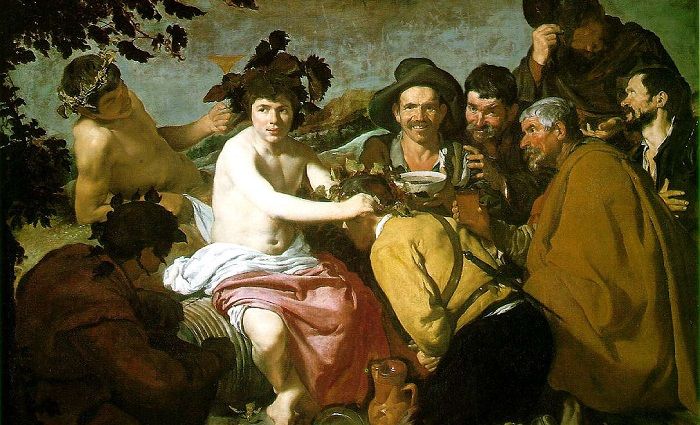
Diego Velázquez | 1628 – 1629 | Oil On Canvas | Room 010
This is the first time Velázquez approaches a mythological subject—something that will be recurrent in his work from that moment. Moreover, Bacchus is one of the first male nudes he ever painted.
Interpretations from the book “Fábulas de Velázquez” state that the painting is an allegory of wine, represented in his more decadent aspect, but also as something that stimulates poetic creation. Bacchus is crowning a young man with an ivy crown, which is typically associated with poets.
Not ready to book a tour yet? See our Madrid Guide for more info.
6. The Nobleman With His Hand On His Chest
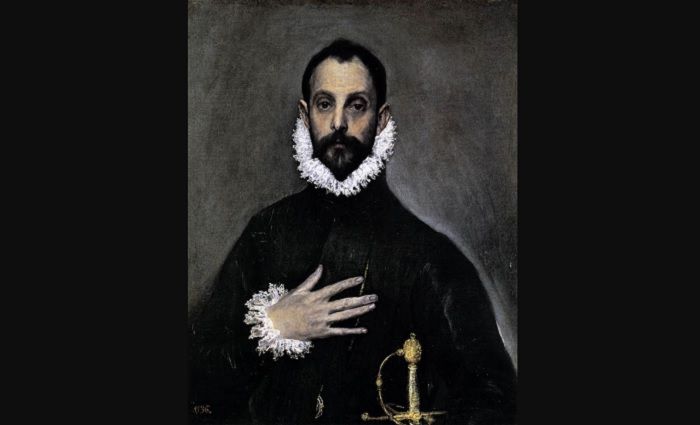
El Greco | Ca. 1580 | Oil On Canvas | Room 009B
Among all the best things to see at the Prado Museum, this painting of El Greco is one of the most captivating. It represents a Spanish nobleman in a pose typical in religious paintings but very unusual for portraying a knight.
Historians have made several hypotheses on the nobleman’s identity, even saying it could be a self-portrait. But according to Leticia Ruiz Gómez, head of the painting department at the Prado Museum, the most convincing theory connects to the military commander of Toledo’s Alcázar, a contemporary of the artist.
We all can agree that El Greco did extraordinary work representing a bold character and spirit by balancing the details he wanted to show. Can you spot the golden medallion? And how original is it to include just the top of the sword in a knight portrait without showing the hand that has it?
Pro Tip: Take a day tour to Toledo to see this beautiful city and visit El Greco Museum. We have prepared a list of the twelve things you should see in Toledo, Spain, that may help you learn more about it. Or you can book our guided day trip to see Toledo, Avila, and Segovia from Madrid.
5. The Triumph of Death
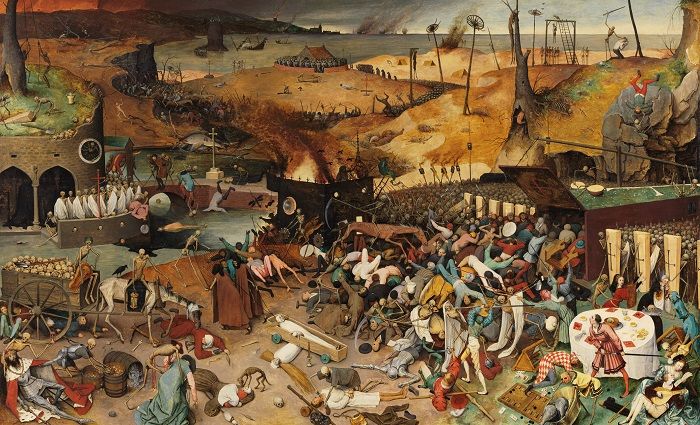
Pieter Bruegel The Elder | 1562 – 1563 | Oil On Panel | Room 055A
If you know this painting from art books, you will be surprised by how different it looks in real life. The photo in this article is taken after the 2018 restoration, which revealed a much brighter and more colorful artwork—not how dark and ochre we have always seen it. And there is more.
In the same year, Restorer Maria Antonia López de Asiaín explained during a conference how the panel experienced several retouches over the centuries. These interventions covered Bruegel’s translucent chromatism and brush strokes technique by adding and altering several elements.
Nowadays, you can appreciate the painting almost as it looked in the 17th century. So try to stop a little longer in front of it because the number of small details is mind-blowing for such a big painting.
4. Las Meninas
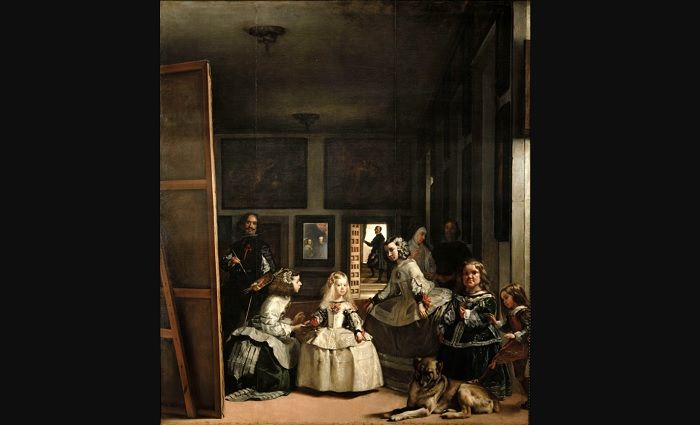
Diego Velázquez | 1656 | Oil On Canvas | Room 012
Velázquez is looking at you, kid. Or is he looking at the king? Las Meninas is a complex painting full of symbols. And it has this irresistible perspective that allows you to see what is behind the viewer: the king and the queen reflected in the mirror.
But who are the “Meninas”? The original title of the painting was The Family of Philip IV. It was only in the 19th century that the Prado cataloged it with the new title, which switches the focus of the painting from the princess to her two maids of honor: the Meninas.
It’s extraordinary how we know the names of all the people in the painting. Art writer Antonio Palamino listed them, showing how Velázquez speaks directly to his contemporaries. But there are also many symbols, for example, the paintings on the walls.
Professor Julián Gállego interprets them—the reflection of the kings and Velázquez’s thinking pose—as a statement about art. According to his interpretation, Velázquez alludes to the superiority of painting and arts over crafts.
Pro Tip: Do you want to take a picture with a 9-foot-tall Menina? If you visit Madrid in November or December, you can! Meninas Madrid Gallery brings several Meninas statues to the city’s streets every year. And if you plan to visit the Prado Museum during Christmas, you will also appreciate the giant Menina made of Christmas lights in Paseo del Prado.
3. The 3rd of May 1808 in Madrid, or The Executions
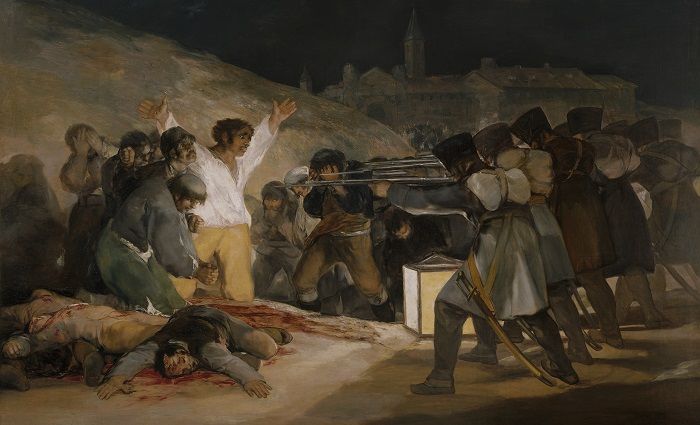
Francisco de Goya | 1814 | Oil On Canvas | Room 064
The dramatic events on the 3rd of May, 1808, of the Spanish patriots’ shooting became an art history lesson in Goya’s hands. Beauty and pathos are irrefutable in the painting, thanks to the expression of the faces and the dramatic light that illuminates the condemned men. But besides Goya’s ability to move the viewers’ emotions, this artwork is also a milestone in art history for its technique and intention.
Goya was a grown man with an established artistic style when he created this painting. However, art historian Manuela Mena highlights how the painting resembles Velázquez and, after him, Rubens and Titian’s oil painting technique. Of course, Goya’s dialogue with the past is intentional.
And he also succeeded in being a point of contact between his predecessors and future painters. His influence is indisputable in The Execution of Emperor Maximilian, painted only a few years after Manet visited Madrid. Picasso’s Massacre in Korea is also another incredible example of this influence.
But there is more. For the first time, war appears cruel and unfair. In Occidental art, the display of war was always a noble battle between armies. The painting is so modern and revolutionary because we see an army/regular power against civilians for the first time—a brilliant union between tradition and innovation.
2. Saturn & The Black Painting
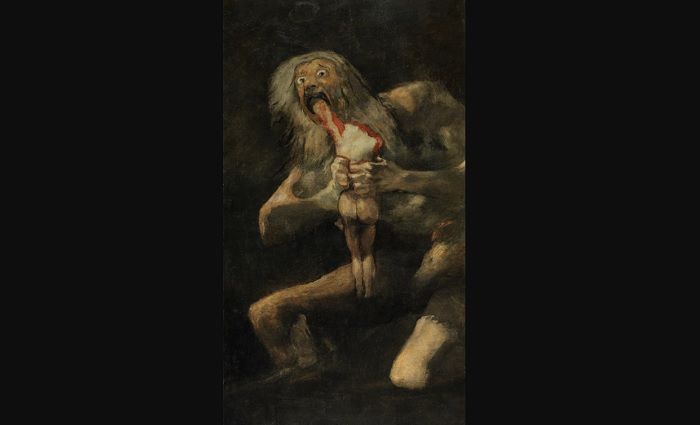
Francisco de Goya | 1820 – 1823 | Mixed Method On Mural Transferred To Canvas | Room 067
Room 067 is a magical place to visit. It hosts Goya’s Black Paintings—his latest artworks. And you could easily do a list of the top things to see at the Prado Museum just with them.
We know Goya painted it directly on the walls between his dining and living rooms. After his death, Baron Émile d’Erlanger had the painting transferred to canvas with an invasive technique named detachment, which was standard then. But researchers are still trying to find out if they are finished. And this is the most exciting point. These latest works express Goya’s imagination and even state of mind. After a brilliant career of commissioned paintings, he appears to have painted them for his enjoyment and the privacy of his house.
Ph.D. student and Prado’s speaker Whitney Dennis explains how Goya represented here all he considered harmful to society, such as superstition. She also strikes an interesting hypothesis about Saturn, one of the series’ most intense and dramatic paintings. The representation of the mythological story of Saturn devouring his children is entirely original.
Note that Saturn is eating a grown person, not a kid. Furthermore, the extraordinary expression on his face resembles more of a mad, desperate man than a powerful god. And this could be a metaphor for what Goya thought about power.
1. The Garden of Earthly Delights
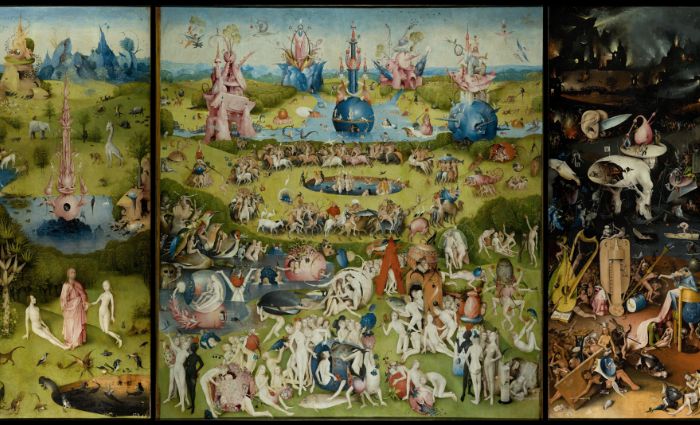
Hieronymus Bosch | 1490 – 1500 | Grisaille, Oil On Oak Panel | Room 056A
Stating that The Garden of Earthly Delights is the first essential artwork to see at the Prado Museum doesn’t seem fair. But it is an extraordinary example of art and the painting in front of which you will spend most of your time. Also, the room it sits in is the richer collection dedicated to this artist worldwide. Just think that less than thirty paintings are attributed to Bosch—and six are here at the Prado!
Alejandro Vergara, curator at the Prado Museum, highlights how difficult it is for historians to agree on Bosch’s interpretation. Everything about Bosch seems to contradict what we expect. Despite being very successful, we know little about his life. His images look unfitting considering the time but are an expression of the medieval Christianity that permeates his contemporaneity.
He is a pessimist, as Vergara defines him, but this painting is colorful, has plenty of light, and is enjoyable. Furthermore, The Garden of Earthly Delights is a triptych, typical of church artworks, but very unusual for a private commission.
We may have lost the ability to understand Bosch’s message and the society he lived in entirely. But you will have the best time examining all the great details of his work. That’s the power of art.
Not ready to book a tour yet? Find out how to visit the Prado Museum.
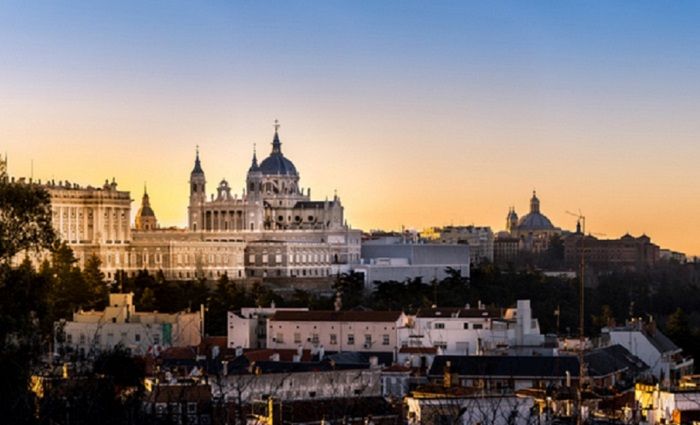
Where To Stay in Madrid
Madrid is a vast city with many areas to stay in, including beyond the downtown area. Choose a hotel near the top things you want to see in this beautiful old city.
